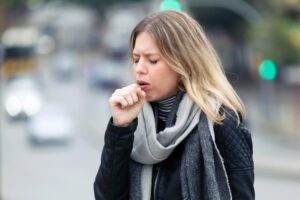Autoimmune Pulmonary Alveolar Proteinosis (aPAP)
What is autoimmune pulmonary alveolar proteinosis?
Autoimmune pulmonary alveolar proteinosis (aPAP) falls under the umbrella of pulmonary alveolar proteinosis (PAP). In fact, it is the most common form. It is estimated that anywhere from 300 to 3,000 people within the United States live with aPAP.
What are the symptoms of autoimmune pulmonary alveolar proteinosis?
Some affected individuals may not experience any symptoms of aPAP, whereas others see:
- Difficulty breathing that gets progressively worse
- Shortness of breath upon exertion
- Cough
- Weight loss
- Chest pain
- Fatigue
- In rare cases patients can cough up blood, experience cyanosis, and see swelling of the fingertips
What causes autoimmune pulmonary alveolar proteinosis?
As the name suggests, aPAP is caused by a malfunction of the immune system. The granulocyte-Macrophage Colony Stimulating Factor (GM-CSF) effect is blocked by IgG antibodies, which stops the GM-CSF protein from cleaning surfactants regularly. These surfactants then build up in the alveoli of the lungs and cause the characteristic symptoms.
How is autoimmune pulmonary alveolar proteinosis diagnosed?
To diagnose aPAP, doctors will begin by evaluating one’s medical history and performing a physical examination. Pulmonary function tests will be used, as will blood tests and CT scans.
What are the treatments for autoimmune pulmonary alveolar proteinosis?
The standard treatment for this rare disease is called a lung lavage, which sees doctors use salt water to “wash out” the lungs. GM-CSF supplemental therapy has also been utilized as a treatment for aPAP, and doctors will also treat the symptoms that appear in each patient.
Where can I find out more about autoimmune pulmonary alveolar proteinosis?
aPAP Articles

Enrollment Complete for Phase 3 Study Evaluating aPAP Treatment Molgramostim


aPAP ClearPath Blood Test Helps Physicians Diagnose Autoimmune Pulmonary Alveolar Proteinosis


Interview with Dr. Wang, an Advocate of Autoimmune Pulmonary Alveolar Proteinosis




